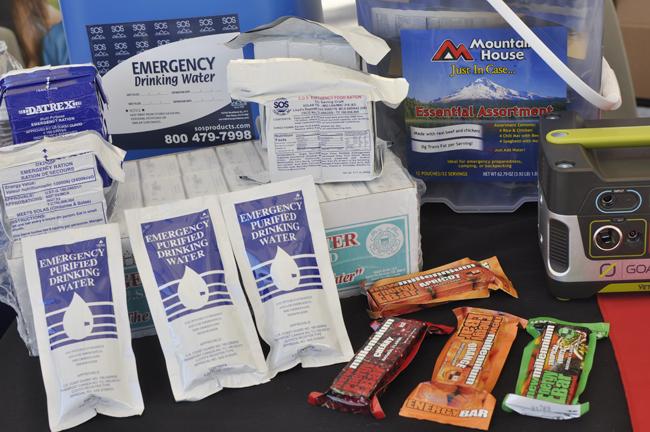
Photo credit: David Hawkins/ Photo Editor
It’s 5 a.m. and you’re sleeping soundly when suddenly you wake up to the sounds of crashing plates and rattling windows. Instinctively you rush out of bed only to find that the ground is shaking profusely. Keeping your balance seems impossible. You’ll spend the next few minutes ducking under a table holding a flashlight.
On January 17, 1994 at 4:30 a.m. an earthquake with a magnitude of 6.7 hit Northridge. It lasted approximately 20 seconds but the aftermath took years to rebuild. Earthquakes can happen at any time in Southern California and though many students have witnessed at least one earthquake in their lifetime, how many of them are truly prepared to face a natural disaster?
With hectic work and school schedules, preparing isn’t at the top of everyone’s to-do list. Yet, even if a student commutes or resides in a dorm, knowing a few survival tips could mean the difference between life and death.
So before anyone begins to stress out and picture horrible earthquake related scenarios, remember to breathe. Creating a survival kit shouldn’t be worrisome. Fortunately, CSUN students can log on to the school’s police department website for helpful information.
The CSUN Earthquake Preparedness Guide Brochure can be a go-to for any pressing questions students may have. Students should begin with packing a basic survival kit that can be left at home or in a car.
The following items should be packed inside a bag:
-
extra set of car and house keys
-
three days to one week supply of water (remember to pack more if you have pets)
-
three days to one week supply of nonperishable food with can opener and utensils
-
basic first aid kit
-
medications and prescriptions
-
radio with extra batteries
-
flashlight with extra batteries, matches and lighter
-
cash and copies of important documents
-
extra clothes
-
tools
-
hygiene products
Apart from setting up a kit, students should also take the time to create an earthquake plan. Talk to family members and decide on a secure location to meet up if people are separated. Also, students should conduct a home hazard hunt. Be aware of any weak spots and know where the shut off valves are around your home. For those who live in dorms, review the buildings evacuation maps. Visiting the closest exits gives students a head start if a real quake were to occur. Students should also consider talking with their roommates and plan together, making the whole process a lot easier to accomplish.
Earthquakes can happen at any time. There are no warning signs or bustling alarms. By staying one step ahead students can stay worry free, but most importantly safe.